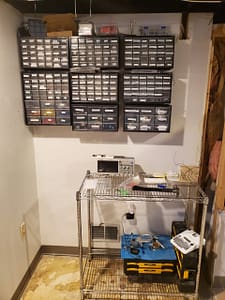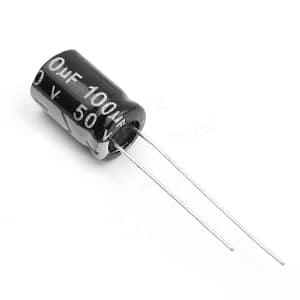Wow! The just opened. Standing outside is my crew. I now have access to my spart parts lab.
#include <Arduino.h> uncomment if using IDE other than Arduino. I have a Raspberry PI that I will be using with Arduino IDE.
/*
array for crew
1 1701796041 Capt. Douglas Adams AA B3 3C 29
2 23715925245 Lt. Ford Prefect ED 9F FC 2D
# 3 2027724463 Sgt. Authur Dent CA 4D F4 3F //Returned with damaged RFID
4 162814481 Eng. Kieran McKenney A2 51 2C 51
5 16711203167 Blank Blank Blank A7 0B CB A7
# 6 18358204167 Blank Blank Blank B7 3A CC A7 //Returned with damaged RFID
String crew[rows][columns] = { { "1", "1701796041", "Capt.", "Douglas", "Adams", "AA", "B3", "3C", "29", "Granted"},
{ "2", "23715925245", "Lt.", "Ford", "Prefect", "ED", "9F", "FC", "2D", "Granted" },
{ "3", "", "", "", "", "", "", "", "", "" },
{ "4", "162814481", "Eng.", "Kieran", "McKenney", "A2", "51", "2C", "51", "Granted" },
{ "5", "16711203167", "", "", "", "A7", "0B", "CB", "A7", "Denied"},
{ "6", "", "", "", "", "", "", "", "", ""} };
*/
#include <SPI.h>
#include <MFRC522.h>
#include <Wire.h> // Library for I2C Wire
// C++ creates class objects. The class is LiquidCrystal_I2C. Each LCD has its own class based on its address.
#include <LiquidCrystal_I2C.h> // Library for I2C LCD displays
LiquidCrystal_I2C lcd_20(0x20, 20, 4); // I2C address 0x20, 20 column and 4 rows
LiquidCrystal_I2C lcd_21(0x21, 20, 4); // I2C address 0x21, 20 column and 4 rows
LiquidCrystal_I2C lcd_22(0x22, 20, 4); // I2C address 0x22, 20 column and 4 rows
LiquidCrystal_I2C lcd_23(0x23, 20, 4); // I2C address 0x23, 20 column and 4 rows
LiquidCrystal_I2C lcd_24(0x24, 20, 4); // I2C address 0x24, 20 column and 4 rows
LiquidCrystal_I2C lcd_25(0x25, 20, 4); // I2C address 0x25, 20 column and 4 rows
LiquidCrystal_I2C lcd_26(0x26, 20, 4); // I2C address 0x25, 20 column and 4 rows
LiquidCrystal_I2C lcd_27(0x27, 20, 4); // I2C address 0x25, 20 column and 4 rows
/* Typical pin layout used:
* -----------------------------------------------------------------------------------------
* MFRC522 Arduino Arduino Arduino Arduino Arduino
* Reader/PCD Uno/101 Mega Nano v3 Leonardo/Micro Pro Micro
* Signal Pin Pin Pin Pin Pin Pin
* -----------------------------------------------------------------------------------------
* RST/Reset RST 9 5 D9 RESET/ICSP-5 RST
* SPI SS SDA(SS) 10 53 D10 10 10
* SPI MOSI MOSI 11 / ICSP-4 51 D11 ICSP-4 16
* SPI MISO MISO 12 / ICSP-1 50 D12 ICSP-1 14
* SPI SCK SCK 13 / ICSP-3 52 D13 ICSP-3 15
*
*/
#define SSPin 53//define sda pin
#define RSTPin 49 //define reset pin
#
//Cabin Light
// #define SwitchPin_22 22
#define RedLed_22 22
#define SwitchPin_23 23
//Opening Front View
#define WhiteLed_24 24
#define SwitchPin_25 25
//Opening Rear View
#define BlueLed_26 26
#define SwitchPin_27 27
int redPin = 8; //pin connected to red cathode of RGB LED
int greenPin = 9; //pin connected to green cathode of RGB LED
int bluePin = 10; //pin connected to blue cathode of RGB LED
int IntRC[4]; // This converts the key fob ID to integers
int Dly = 5000;
String readCard[4]; //array for storing the UID of the card, 4 is the size because it will store 4 hexadecimal values but convert to string for easy identity checking later on
MFRC522 mfrc522(SSPin, RSTPin); //create instance of mfrc522 class
MFRC522::MIFARE_Key key; //create key structure used to store card info
//custom color writer func for rbg led
void RGBColorPicker(int redValue, int greenValue, int blueValue) { //3 parameters, red, green, blue value are used for writing the different color values to make a single color to display on the LED
analogWrite(redPin, redValue); //write specific value for red aspect of the RGB LED
analogWrite(greenPin, greenValue); //write specific value for green aspect of the RGB LED
analogWrite(bluePin, blueValue); //write specific value for blue aspect of the RGB LED
}
//reads card uid stores in string
String readCardUID(String UIDToRead) { //parameter: UIDToRead used to pass a string in which we want to store the UID
for (int i = 0; i < mfrc522.uid.size; i++){ // create a loop to go through the UID, for which the end of the reading is defined by the size
readCard[i] = String(mfrc522.uid.uidByte[i]); //mfrc522.uid.uidByte = an array containing the entire uid for our card but we can only take it out one byte at a time; convert to string so we can store it in our redCard array
IntRC[i] = readCard[i].toInt();
UIDToRead = UIDToRead + readCard[i]; //continuously concatanate the read byte into our passed string, UIDToRead
}
return(UIDToRead);
}
void setup() {
// Arduino Mega on I2C Bus
// I usually connect my Arduino devices and Raspberry Pi devices to the I2C bus. This will start the addresses at 0x50.
Wire.begin(0x50);
//DIP Switch for Cabin Light
pinMode(RedLed_22, OUTPUT);
pinMode(SwitchPin_23, INPUT);
pinMode(WhiteLed_24, OUTPUT);
pinMode(SwitchPin_25, INPUT);
pinMode(BlueLed_26, OUTPUT);
pinMode(SwitchPin_27, INPUT);
//DIP Switch for Opening
// I2C LCD screens are on addresses 0x20 to 0x27. This code is used to find all of the I2C LCDs attached.
lcd_20.clear(); // clear display 0x20
lcd_20.init(); // initialize the lcd
lcd_20.backlight();
lcd_20.setCursor(0, 0);
lcd_20.print("0x20");
lcd_21.clear(); // clear display 0x21
lcd_21.init(); // initialize the lcd
lcd_21.backlight();
lcd_21.setCursor(0, 0);
lcd_21.print("0x21");
lcd_22.clear(); // clear display 0x22
lcd_22.init(); // initialize the lcd
lcd_22.backlight();
lcd_22.setCursor(0, 0);
lcd_22.print("0x22");
lcd_23.clear(); // clear display 0x23
lcd_23.init(); // initialize the lcd
lcd_23.backlight();
lcd_23.setCursor(0, 0);
lcd_23.print("0x23");
lcd_24.clear(); // clear display 0x24
lcd_24.init(); // initialize the lcd
lcd_24.backlight();
lcd_24.setCursor(0, 0);
lcd_24.print("0x24");
lcd_25.clear(); // clear display 0x25
lcd_25.init(); // initialize the lcd
lcd_25.backlight();
lcd_25.setCursor(5, 0); // move cursor to (5, 0)
lcd_25.print("Welcome To");
lcd_25.setCursor(4, 1); // move cursor to (4, 1)
lcd_25.print("The Heart of");
lcd_25.setCursor(3, 2); // move cursor to (3, 2)
lcd_25.print("Stainless Steel");
lcd_26.clear(); // clear display 0x26
lcd_26.init(); // initialize the lcd
lcd_26.backlight();
// 0x27 is in use with the RFID tagging system.
lcd_27.clear(); // clear display 0x27
lcd_27.init(); // initialize the lcd 0x27
lcd_27.backlight();
//define RGB LED outputs
pinMode(redPin, OUTPUT);
pinMode(greenPin, OUTPUT);
pinMode(bluePin, OUTPUT);
RGBColorPicker(0,0,255); //initialize our RGB LED at color blue
SPI.begin(); //begin SPI bus
mfrc522.PCD_Init(); //initialize mfrc522 card
for (byte i = 0; i < 6; i++){
key.keyByte[i] = 0xFF; //set key security id values to 0xFF across the board
}
lcd_27.setCursor(0, 0); // move cursor to (0, 0)
lcd_27.print("Scan "); // print message at (0, 0)
}
void loop() {
// I usually use arrays for data groups. This group is the RFID information, rank and crew members.
int rows = 6;
int columns = 10;
String crew[rows][columns] = { { "1", "1701796041", "Capt.", "Douglas", "Adams", "AA", "B3", "3C", "29", "Granted"},
{ "2", "23715925245", "Lt.", "Ford", "Prefect", "ED", "9F", "FC", "2D", "Granted" },
{ "3", "", "", "", "", "", "", "", "", "" },
{ "4", "162814481", "Eng.", "Kieran", "McKenney", "A2", "51", "2C", "51", "Granted" },
{ "5", "16711203167", "", "", "", "A7", "0B", "CB", "A7", "Denied"},
{ "6", "", "", "", "", "", "", "", "", ""} };
//DIP Switch for cabin light
if (digitalRead(SwitchPin_23) == HIGH)
{
lcd_26.setCursor(0, 0);
lcd_26.print("Cabin Light is ON");
digitalWrite(RedLed_22, HIGH);
}
if (digitalRead(SwitchPin_23) == LOW)
{
lcd_26.setCursor(0, 0);
lcd_26.print("Cabin Light is OFF");
digitalWrite(RedLed_22, LOW);
}
//DIP Switch for opening front view
if (digitalRead(SwitchPin_25) == HIGH)
{
digitalWrite(WhiteLed_24, HIGH);
lcd_26.setCursor(0, 1);
lcd_26.print("Front View Open");
}
else
{
digitalWrite(WhiteLed_24, LOW);
lcd_26.setCursor(0, 1);
lcd_26.print("Front View Closed");
}
//DIP Switch for opening rear view
if (digitalRead(SwitchPin_27) == HIGH)
{
digitalWrite(BlueLed_26, HIGH);
lcd_26.setCursor(0, 2);
lcd_26.print("Rear View Open");
}
else
{
digitalWrite(BlueLed_26, LOW);
lcd_26.setCursor(0, 2);
lcd_26.print("Rear View Closed");
}
String UID = ""; //first read
String SecondRead = ""; //second read
// if new card is not present rerun loop
if (!mfrc522.PICC_IsNewCardPresent()){
return;
}
//select card to read
if (!mfrc522.PICC_ReadCardSerial()){
return;
}
UID = readCardUID(UID); //call the readCardUID function and store it in UID variable
for ( int i = 0; i <= 6; i++ ) {
RGBColorPicker(0,0,255); //Start RGB LED as Blue
if ( UID == crew[i][1]){
//print to I2C LCD 0x27 UID on line 1
lcd_27.clear(); // clear display
lcd_27.setCursor(0, 0); // move cursor to (0, 0)
lcd_27.print("UID: "); // print message at (0, 0)
lcd_27.setCursor(5, 0); // move cursor to (5.0)
lcd_27.print(UID); // print message at (2, 1)
lcd_27.setCursor(0, 1); // move cursor to (0, 1)
lcd_27.print(crew[i][2]); // print message at (0, 1)
lcd_27.print(" ");
lcd_27.print(crew[i][3]); // print message at (0, 1)
lcd_27.print(" ");
lcd_27.print(crew[i][4]);
lcd_27.setCursor(0, 2); // move cursor to (0, 2)
lcd_27.print("Access: ");
lcd_27.setCursor(9, 2); // move cursor to (9, 2)
lcd_27.print(crew[i][9]);
// This code changes the RGB LED to colors depending on access.
// Red for Denied
// Green for Granted
// I created two If Else statements that do the same thing. The active one is less code.
/*
if (crew[i][9] == "Granted")
{
// RGBColorPicker(0,255,0); //set color to green
RGBColorPicker(0,255,0);
delay(Dly);
}
else if (crew[i][9] == "Denied")
{
// RGBColorPicker(0,255,0); //set color to red
RGBColorPicker(255,0,0);
delay(Dly);
}
*/
if (crew[i][9] == "Granted")
{
// RGBColorPicker(0,255,0); //set color to green
RGBColorPicker(0,255,0);
delay(Dly);
}
else {
// RGBColorPicker(0,255,0); //set color to red
RGBColorPicker(255,0,0);
delay(Dly);
}
}
lcd_27.clear(); // clear display
//Serial.println("Scan card for message: "); //scan card for secret message
//delay(500);
//revealMessage(SecondRead); //calls revealMessage function, storing the second read of the UID into variable SecondRead
} //end of for loop
mfrc522.PICC_HaltA(); //stops reading
lcd_27.setCursor(0, 0); // move cursor to (0, 0)
lcd_27.print("Scan: "); //end of loop -> prompts user to scan again
RGBColorPicker(0,0,255);
}
I found noise on the I2C bus that is caused by the grounding. I will place a 100uF capacitor across the VCC to Ground and I2C SDA to SCL buses. This will help clean up the noise and boost current to the circuit.


